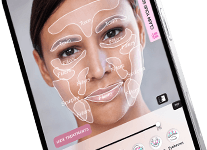If you’re dealing with stubborn dark spots, uneven skin tone, or those lingering patches left behind by acne, sun exposure, or hormonal changes, you’re not alone. Many of us experience these skin concerns at some point, and it can be frustrating when our usual skincare routine just doesn’t cut it.
That’s where professional treatments like a chemical peel for pigmentation start to stand out. You may have heard the term tossed around at a dermatologist’s office, in a beauty blog, or even from a friend who swears by it. But naturally, questions come up: Does it work? Is it painful? Will it make my skin worse before it gets better?
Let’s take the guesswork out of it. In this guide, we’ll break down what a chemical peel for pigmentation does, how it helps even out your skin tone, what the process feels like, and—most importantly—how to care for your skin before and after so you get the safest, most glowing results possible.
What Is a Chemical Peel for Pigmentation?
If you’ve been battling stubborn dark spots, sun damage, acne scars, or uneven tone that just won’t go away—despite your best skincare efforts—you’re not alone. Many people find themselves endlessly searching for a solution, wondering what works. One of the most trusted and practical answers? A chemical peel for pigmentation.
At Specialty Wellness in The Colony, TX, our expertly formulated peels deliver results that go beyond the surface. A chemical peel for pigmentation involves applying a specially chosen chemical solution to the skin, which exfoliates the outer layers and stimulates your body’s natural cell turnover. This reveals smoother, brighter, and more even-toned skin beneath.
What Can It Improve?
A chemical peel for pigmentation helps visibly reduce:
- Sun spots and age spots
- Melasma
- Post-inflammatory hyperpigmentation (PIH)
- Acne-related dark marks
- Freckles and blotchy skin
It’s a potent treatment for anyone who feels like their pigmentation is holding them back from glowing, confident skin.
How Does a Chemical Peel for Pigmentation Work?
During your visit, one of our licensed aestheticians will apply a customized chemical peel for pigmentation, often using agents such as glycolic acid, salicylic acid, or TCA, which penetrate the top layers of the skin where excess pigment resides. As this outer layer peels away, your skin regenerates with a clearer, fresher tone.
This treatment doesn’t just fade dark patches—it also:
- Stimulates collagen production
- Unclogs pores and reduces breakouts
- Smooths and brightens overall skin texture
Think of a chemical peel for pigmentation as a reset button for your skin.
Is It Safe for All Skin Types?
Yes—but with the proper precautions. A chemical peel for pigmentation is generally safe for individuals with various skin tones and types. However, people with darker skin tones may need a tailored approach to avoid potential side effects like post-inflammatory hyperpigmentation.
To stay safe and get the best results:
- Work with trained professionals like our team at Specialty Wellness
- Follow all pre-peel and post-peel care instructions
- Avoid sun exposure and wear SPF religiously
If you’ve had issues such as cold sores, keloids, or very sensitive skin in the past, be sure to mention this during your consultation.
Do Chemical Peels for Pigmentation Work?
Absolutely. A chemical peel for pigmentation is clinically backed and loved by skin professionals everywhere—because it works. Results vary depending on your skin tone and concern, but most people notice:
- Brighter, more even skin tone
- Faded dark spots and scars
- Smoother, radiant texture
For optimal results, a series of 3–6 chemical peels for pigmentation, spaced a few weeks apart, may be recommended. At Specialty Wellness, we use Jessner’s Peels, Modified Jessner’s, and the popular VI Peel, each tailored for your specific skin goals.
Are There Any Side Effects?
Side effects of a chemical peel for pigmentation are typically mild and short-lived. You may experience:
- Temporary redness or swelling
- Flaking or mild peeling
- A darkening of spots before they lighten (a regular part of healing)
To minimize risk:
- Follow aftercare instructions closely
- Don’t pick or peel at your skin
- Avoid sun exposure during healing
Our team is always available to guide you through the healing process and address any concerns you may have regarding your chemical peel for pigmentation.















